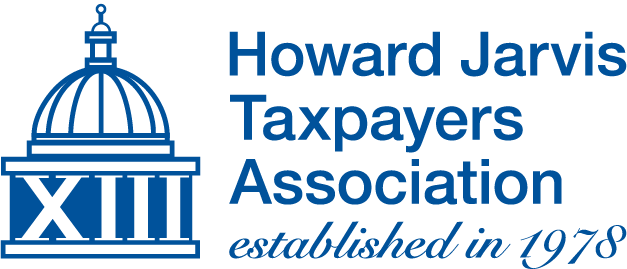
HJTA PREPARES FOR BUSY LEGISLATIVE YEAR
It’s challenging to provide a legislative overview for the first Taxing Times issue of the year, which goes to press before the text of nearly 2,500 newly introduced bills is available to review.
However, HJTA is focused on many topics in the Capitol outside of legislation. Perhaps the most important document legislators pass every year is the state budget. The budget hasn’t received as much focus in recent years after voters dropped the passage requirement from two-thirds to a majority vote in 2010. Since that point, while budgets have been approved on time, spending has spiraled out of control. Revenues from the state General Fund, special funds and bond funds have increased by $92 billion to a record in this year’s proposed budget of $222 billion. To put that in perspective, between the years 2000–2010 the figure increased by only $34 billion.
All taxpayers should be troubled by this lack of fiscal restraint, which unfortunately receives very little media attention. Here’s what’s important to know about the budget that Governor Gavin Newsom released in January. The $222 billion budget represents a $2.3 billion increase from last year’s budget and 2.2 percent overall. California continues to have a budget surplus of at least $7 billion. Education funding overall is slated to see a record budget amount of $84 billion. This is $330 million more than last year, despite the fact that average daily attendance cumulatively across all school districts has declined in four of the last five years.
While to most people it seems like there is plenty of money to go around, taxpayers need to be concerned about a couple of different areas. The first is that the budget fails to take into account an inevitable (and looming) recession. Many numbers speak to this. The budget surplus has declined from over $20 billion last year to $7 billion this year. Also, while state budget reserves continue to increase, there is only about $21 billion in the fund. This will allow us to fund only two years of a moderate recession and likely only one year in the event of a recession as severe as the one in 2008.
This budget also fails to prioritize the concerns of California residents. This is especially true regarding homelessness and housing. While this budget proposes $1 billion for homeless programs, including grant funds designated specifically for cities and counties, California has increasingly adopted a “housing first” motto that fails to take into account the social services and “wraparound” treatment that California’s 130,000 homeless individuals truly need. Yes, there’s a need for more housing, but there’s also a need for treatment of substance abuse and mental illness, as well as programs for job training and workforce development. We have yet to see a comprehensive program from the Newsom administration that combines these elements together effectively.
To be clear, though, more housing is needed. An estimated 20 percent of California’s homeless population are in that situation simply because they cannot afford a place to live. One-third of California renters spend half of their take-home pay on rent, and only about 25 percent can afford a median-priced home ($600,000) in California. But a number of things conspire against affordable housing in California, including the $330,000 average cost of building a unit of affordable housing, as well as the numerous government mandates imposed on new development such as inclusionary zoning, solar panels on new development and environmental lawsuits. It’s little wonder then that housing construction actually declined last year to less than 100,000 new units. To put that number in perspective, California needs 180,000 units of new housing annually just to keep pace with demand.
While it is easy for our eyes to glaze over discussing a billion dollars here or there, it is imperative that we all gain a better understanding of how our tax dollars are spent. Reviewing the state budget is the best way to do that.
In our next issue, I’ll have a complete rundown on all the legislative bills HJTA is engaging on in 2020, including any new legislative attacks on Proposition 13. If you can’t wait that long, feel free to go to our legislative action page. For thirteen years now (yes, it’s been that long!), it remains my pleasure to serve you in the hallways of the State Capitol.
HJTA.org is your source for everything Proposition 13 and for information valuable to California taxpayers. For more information or to take action, go to HJTA.org/take-action.
Published by the Howard Jarvis Taxpayers Association (HJTA). Copyright © 2020 by Howard Jarvis Taxpayers Association. All rights reserved.

